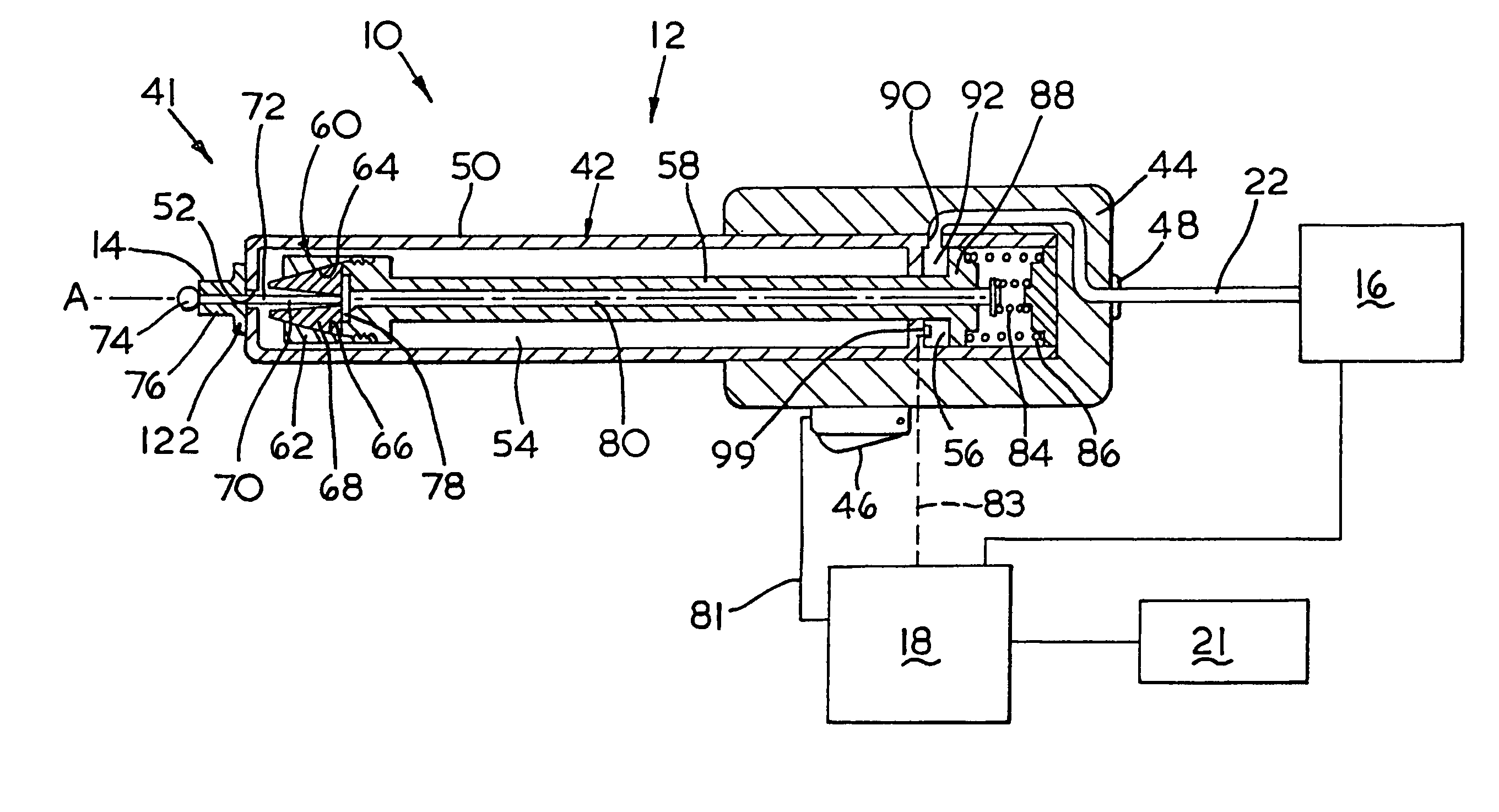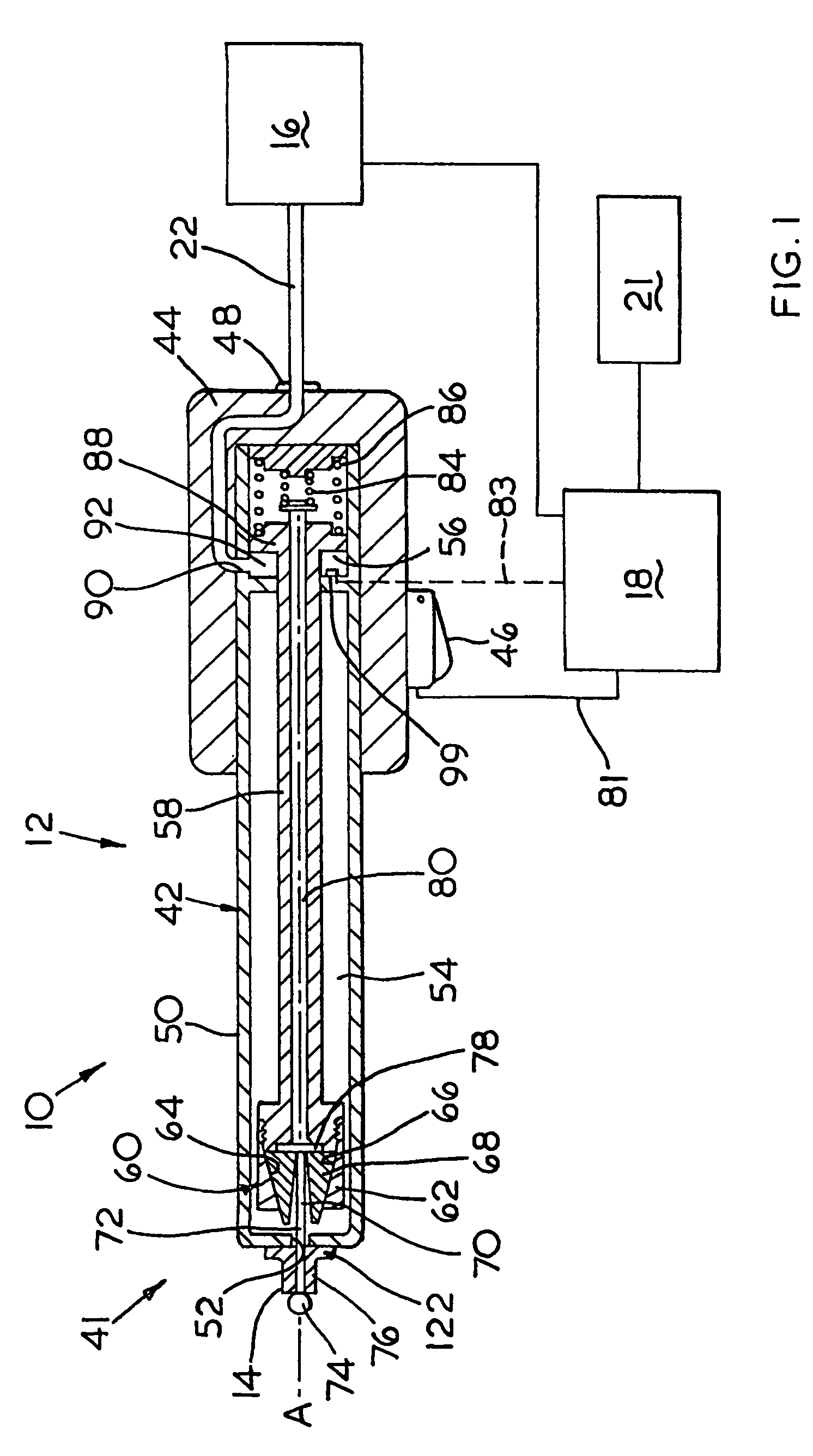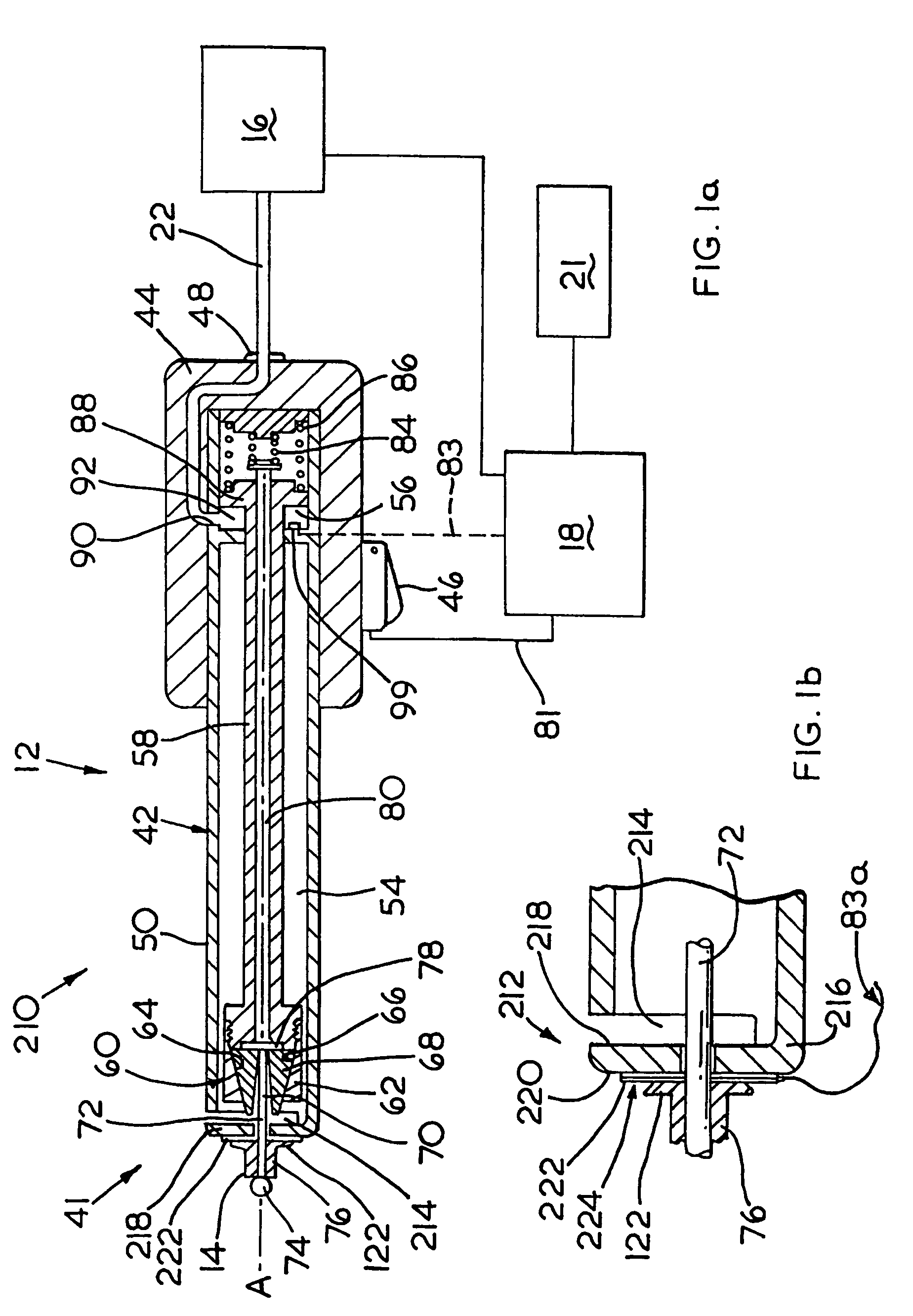Method and apparatus for monitoring blind fastener setting
a technology for blind fasteners and setting devices, applied in the direction of coupling device connections, manufacturing tools, instruments, etc., can solve the problems of not being able to visually inspect to determine a correctly completed joint, introducing an additional manufacturing step and associated expense into the manufacturing procedure, and not being able to visually inspect to determine if an incorrectly sized rivet has been used in a particular hole diameter
- Summary
- Abstract
- Description
- Claims
- Application Information
AI Technical Summary
Benefits of technology
Problems solved by technology
Method used
Image
Examples
Embodiment Construction
[0033]Referring now to FIG. 1, a conventional blind rivet setting tool is schematically illustrated. A blind rivet setting system (10) comprises a rivet setting tool (12) for setting a blind rivet (14) a hydraulic intensifier (16) and system control circuit shown schematically as (18). The intensifier (16) may be any one of a number of conventional such intensifiers commonly used within the art but may simply be considered as a fluid pressure source for controllably applying pressure to the setting tool (12) by means of hydraulic fluid transferred via a fluid connection pipe (22). Often, intensifiers (16) of this type employ a pressure source, such as pressurised air applied to a cylinder, to compress a hydraulic oil or fluid to transfer fluid pressure to the setting tool. The fluid contained in the intensifier (16) may be considered to be in continuous fluid communication, through pipe (22), with the rivet setting tool (12).
[0034]The tool (12) comprises an elongated body generally ...
PUM
| Property | Measurement | Unit |
|---|---|---|
| Time | aaaaa | aaaaa |
Abstract
Description
Claims
Application Information
 Login to View More
Login to View More - R&D
- Intellectual Property
- Life Sciences
- Materials
- Tech Scout
- Unparalleled Data Quality
- Higher Quality Content
- 60% Fewer Hallucinations
Browse by: Latest US Patents, China's latest patents, Technical Efficacy Thesaurus, Application Domain, Technology Topic, Popular Technical Reports.
© 2025 PatSnap. All rights reserved.Legal|Privacy policy|Modern Slavery Act Transparency Statement|Sitemap|About US| Contact US: help@patsnap.com



